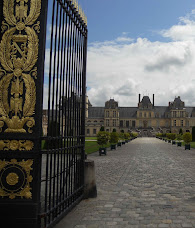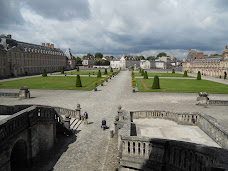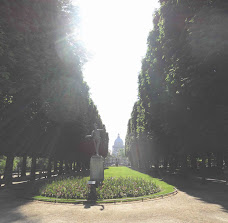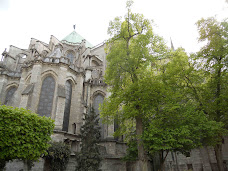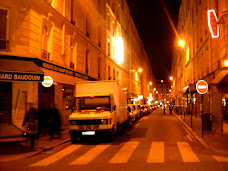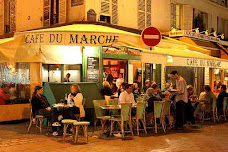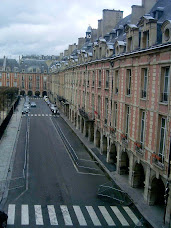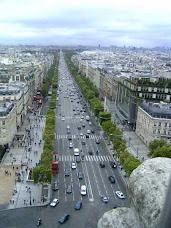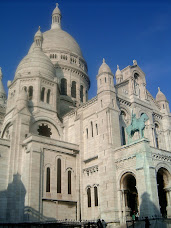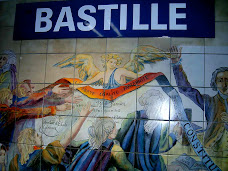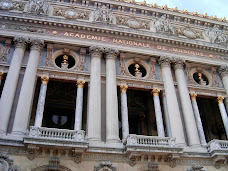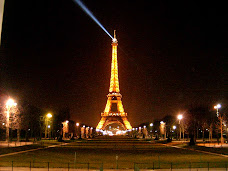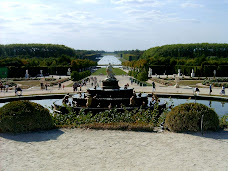Hip, no tick
Cotidiano de uma brasileira em Paris, comentarios sobre cultura, politica e besteiras em geral. Entre le faible et le fort c'est la liberté qui opprime et la loi qui libère." Jean-Jacques Rousseau
Saturday, September 25, 2010
Friday, September 17, 2010
Fri
ahhhh
Dei
For: Dancing, Listening, Analyzing, Singing Along, or just...Chilling.
Tuesday, September 14, 2010
"What's 'entropy'?"
"Erm. It's...when shit starts to go to bollox. I believe that is the scientific definition of it."

Saturday, September 11, 2010
Thursday, September 9, 2010
Writers Paradox
Writers have a reputation for being aloof, solitary beings who are often shut in their flats, subsisting on alcohol and semi-perished food.
I thought about this while reading Sabina Murray's A Carnivore's Inquiry (and excellent, v well written, if dark, book where most characters get absolutely sloshed every other page).
In the book, one of Murray's characters, Boris, claims writers detest parties and social occasions of all kinds because they take up too much of one's time while adding precious little to one's creative and observational stock.
It takes up time that could be used in a better way. In a writer's case - writing, or reading.
So yes, I suppose writers do tend to be people who observe a lot but who don't seem to spend time with other people. When do they get to do all this observation, if this is true? Is reading about other characters enough? Are good writers able to "substitute" real people -and the fresh ideas or personality traits they might have- with their fictional characters?
One of the great works of literature to which I dedicated three whole days and then was bitterly disappointed by was Anna Karenina. I couldn't leave the book for three days in a row, pausing only to eat, shower, and go buy cigs while the coffee was brewing. And then she kills herself. She spent the entire book striving, only to kill herself? No, Tolstoy. NO. You cannot do this to me, I repeated, out loud, while standing in a cold, empty flat, alone, outraged, cheated. Oh, the drama.
Because Anna Karenina, in the way she was presented to me (or perhaps in the way I read her-- does it make a huge difference?), would not have committed suicide.
Which brings me to the problem. She's a fictional character, not based on a real person with coherent, believable personality traits. Either that OR Tolstoy drew inspiration from a real person and then ruined her personality in the end of the book. Maybe she's a woman with whom he was in love and killing her was the way he found to get over her? Get back at her? Or, yet another alternative, she was based on a real person, one with serious mental health problems. But if this is the case, Tolstoy did not cover that minor detail.
The Anna Karenina conundrum aside, the question remains: when do these writers go out and observe, if they're such hermits?
Marc-Édouard Nabe, I have it on good authority, still roams the streets of Paris and goes to the corner café near his place and chats about this and that mind-numbingly boring news that's hot that week with the other patrons. He observes real people.
Houellebecq, on the other hand, doesn't, despite the fact I saw him once, while coming back from my local café where I'd gone to buy cigs while the coffee brewed and a Nabe book waited for me, splayed open on the kitchen table, surrounded by dirty coffee cups. Houellebecq writes based on his idea of people, I heard, especially since he moved to a house in the middle of the Irish countryside, largely to avoid paying taxes in France.
Ok. So. This is all. Leave your comments if you can (and even if you can't) help me with this one.

Wednesday, September 8, 2010
Sunday, September 5, 2010
DominTanGo
When a style or genre of music is modified or "modernized", artists run a v big risk. Of it being total bollox. I think in the case of the track below it worked well. But Tango does have this quality, doesn't it? It can be poked & prodded and not perish.
Traditionalists will disagree, I'm sure, but then I find comfort in the way they treated Piazzolla and his subsequent influence. VictoriAstor.
Some genres were almost made to be in a state of perennial metamorphosis, like the continent it comes from, in this case.
For comparison's sake, here's a traditional track:
And a Nuevo Tango one -- Astor:
My fav is Piazzolla.
Thursday, September 2, 2010
Architectural Chimera
Since we moved to this area of Paris, every time I walk past this building I stop and look at it for a few moments, before moving on to whatever I have to do that day.
The first time I noticed it I couldn't quite tell why it caught my attention so much. So I spent some time considering this building's features and architectural idiosyncrasies.
One of the first things that caught my eye was the Romantic distribution of rooms -- asymmetry. Two windows on the left of the entrance door, one on the right.  This puts it squarely, so to speak, in the Romantic era. But does it?
This puts it squarely, so to speak, in the Romantic era. But does it?
 This puts it squarely, so to speak, in the Romantic era. But does it?
This puts it squarely, so to speak, in the Romantic era. But does it?Looking at the door, because I quite like doors and windows anyway...but looking closely, one notices a rather strong Art Nouveau influence.  The ironwork on the balconies also show a modified style, perhaps already in the period of transition from Art Nouveau.
The ironwork on the balconies also show a modified style, perhaps already in the period of transition from Art Nouveau. Yes, this balcony is decidedly not Romantic, but it isn't exactly Art Nouveau either. What is it? I have no clue.
Yes, this balcony is decidedly not Romantic, but it isn't exactly Art Nouveau either. What is it? I have no clue.
 The ironwork on the balconies also show a modified style, perhaps already in the period of transition from Art Nouveau.
The ironwork on the balconies also show a modified style, perhaps already in the period of transition from Art Nouveau. Yes, this balcony is decidedly not Romantic, but it isn't exactly Art Nouveau either. What is it? I have no clue.
Yes, this balcony is decidedly not Romantic, but it isn't exactly Art Nouveau either. What is it? I have no clue.Things become slightly more confusing when one looks further up from this balcony, onto the 3rd or 4th floor. The columns. They're neoclassical in appearance, but the Romantic and Art Nouveau features exclude the possibility this building is neoclassical.  Then look. To the right, this rounded window. The only window different from the rest. It's so intriguing, I don't know which period it is, or even if it is from one. I tried (not v hard) to find out who the architect was but, unlike some of the buildings in the city, this one doesn't have the architect's signature anywhere.
Then look. To the right, this rounded window. The only window different from the rest. It's so intriguing, I don't know which period it is, or even if it is from one. I tried (not v hard) to find out who the architect was but, unlike some of the buildings in the city, this one doesn't have the architect's signature anywhere. 
 Then look. To the right, this rounded window. The only window different from the rest. It's so intriguing, I don't know which period it is, or even if it is from one. I tried (not v hard) to find out who the architect was but, unlike some of the buildings in the city, this one doesn't have the architect's signature anywhere.
Then look. To the right, this rounded window. The only window different from the rest. It's so intriguing, I don't know which period it is, or even if it is from one. I tried (not v hard) to find out who the architect was but, unlike some of the buildings in the city, this one doesn't have the architect's signature anywhere. 
Then there are the hints of Renaissance ornaments. The woman's bust above the door,  the bullheads under the balcony, the angels or nymphs or whatever they are around the window in the centre
the bullheads under the balcony, the angels or nymphs or whatever they are around the window in the centre  and more figures surrounding the higher up windows, coupled with more Art Nouveau-like ironwork on the small, shy parapet.
and more figures surrounding the higher up windows, coupled with more Art Nouveau-like ironwork on the small, shy parapet. 
 the bullheads under the balcony, the angels or nymphs or whatever they are around the window in the centre
the bullheads under the balcony, the angels or nymphs or whatever they are around the window in the centre  and more figures surrounding the higher up windows, coupled with more Art Nouveau-like ironwork on the small, shy parapet.
and more figures surrounding the higher up windows, coupled with more Art Nouveau-like ironwork on the small, shy parapet. 
I don't know what to make of this building but I like it a lot, it's got charm. It blows raspberries at convention while managing to maintain coherence in its confusion. The only problem is there is no focus... there are so many things to look at that one's eyes have nowhere to rest, they keep going everywhere, all the time.
Subscribe to:
Posts (Atom)


